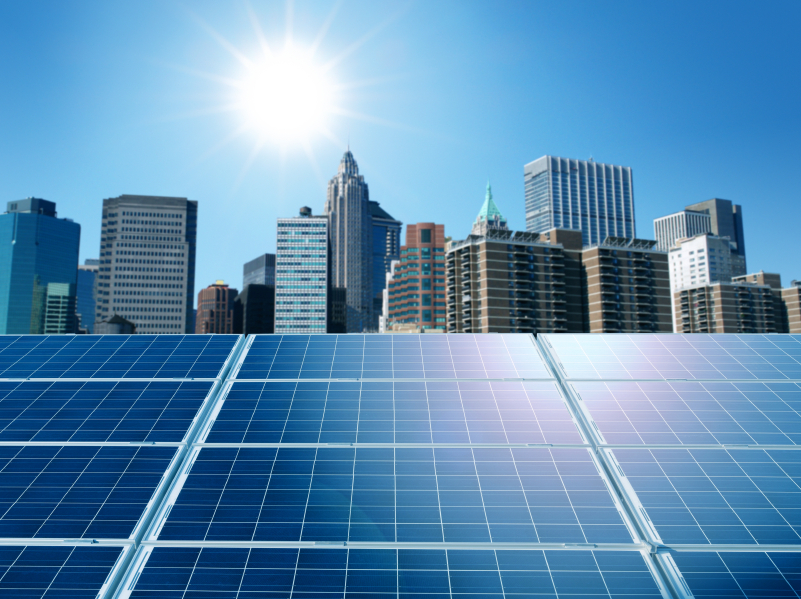It is great to be aware of government policy in regard to solar and renewable energy in Australia. It not only shapes our economy in the way that it effects job opportunities, it also impacts investment and sets our position on the world stage in regard to our nation’s contribution to sustainability. With the Renewable Energy Target’s reforms settled, it will directly impact Large Scale Solar and investment into Solar.
A statement from the Clean Energy Council highlights the RET’s impact.
“The RET was reviewed by the Government and reduced in June 2015 from the previously legislated 41,000 GWh to 33,000 GWh. The deal was a compromise brokered by the Clean Energy Council following 15 months of lost investment confidence caused by the review of the policy. While the Clean Energy Council is disappointed by the level of the reduction of the target, an agreement on the RET now opens the way to unlock massive investment and job opportunities in Australia. The RET agreement also removed previously legislated RET reviews which were to occur every two years which compounded the lack of investment confidence. The RET has been operating since 2001 and is already about halfway to meeting the revised 33,000 GWh target.”
Reforms to the Renewable Energy Target
“The Australian Government has settled on reforms to the Renewable Energy Target, following careful consideration and extensive consultations.
The new target for large-scale generation of 33,000 GWh in 2020 will double the amount of large-scale renewable energy being delivered by the scheme compared to current levels and means that about 23.5 per cent of Australia’s electricity generation in 2020 will be from renewable sources.
- Certainty and growth for renewable energy– media release 23 June 2015
Amending legislation to implement the Government’s reforms to the Renewable Energy Target (RET) was agreed to by the Australian Parliament on 23 June 2015.
The package of reforms includes measures that will provide certainty to industry, encourage further investment in renewable energy and better reflect market conditions.
The RET has been amended to:
- protect Australian jobs and help industries remain competitive by increasing assistance for all emissions-intensive trade-exposed industries to 100 per cent exemptions from all RET costs
- remove the requirement for biennial reviews of the scheme and replace them with regular status updates by the Clean Energy Regulator, to provide more certainty to industry and transparency to consumers
- reinstate biomass from native forest wood waste as an eligible source of renewable energy, including the same safeguards that were in place prior to removal of this source from eligibility in late 2011.
The Government will also work to progress reforms to improve the scientific understanding of wind turbine noise and the monitoring and transparency of information relating to the operation of wind turbines. The scope of these reforms is subject to the outcomes of the final report of the Senate Select Committee on Wind Turbines and agreement of the states and territories where appropriate.
The Government is also considering options to enhance the uptake of large-scale solar technology, other renewable energy technologies and energy efficiency.
Large-scale Renewable Energy Target
Since January 2011 the RET scheme has operated in two parts—the Small-scale Renewable Energy Scheme (SRES) and the Large-scale Renewable Energy Target (LRET).
The LRET creates a financial incentive for the establishment or expansion of renewable energy power stations, such as wind and solar farms or hydro-electric power stations. It does this by legislating demand for Large-scale Generation Certificates (LGCs). One LGC can be created for each megawatt-hour of eligible renewable electricity produced by an accredited renewable power station. LGCs can be sold to entities (mainly electricity retailers) who surrender them annually to the Clean Energy Regulator to demonstrate their compliance with the RET scheme’s annual targets. The revenue earned by the power station for the sale of LGCs is additional to that received for the sale of the electricity generated.
The LRET includes legislated annual targets which will require significant investment in new renewable energy generation capacity in coming years. The large-scale targets ramp up until 2020 when the target will be 33,000 gigawatt-hours of renewable electricity generation.
Small-scale Renewable Energy Scheme
The SRES creates a financial incentive for households, small businesses and community groups to install eligible small-scale renewable energy systems such as solar water heaters, heat pumps, solar photovoltaic (PV) systems, small-scale wind systems, or small-scale hydro systems. It does this by legislating demand for Small-scale Technology Certificates (STCs). STCs are created for these systems at the time of installation, according to the amount of electricity they are expected to produce or displace in the future. For example, the SRES allows eligible solar PV systems to create, at the time of installation, STCs equivalent to 15 years of expected system output.
RET-liable entities with an obligation under the LRET also have a legal requirement under the SRES to buy STCs and surrender them to the Clean Energy Regulator on a quarterly basis.
While it is possible for owners of renewable energy systems to create and sell the STCs themselves, in practice, installers of these systems usually offer a discount on the price of an installation, or a cash payment, in return for the right to create the STCs.”
We offer an STC discount at point of sale on every proposal. One major differing factor from other Solar Energy Companies is our European designed, complete and comprehensive solar PV system with an industry-first guaranteed AC kWh output.
With 40 years’ experience in the building industry, we are very capable in the project management of the process. We undertake an assessment of your premises, in order to design the most suitable, efficient solar unit at the best price. We will provide industry advice and a report detailing your energy savings and ROI and Internal Rate of Return (IRR).
